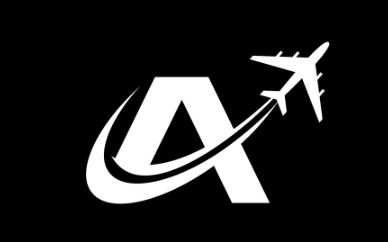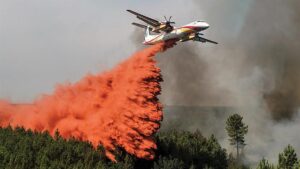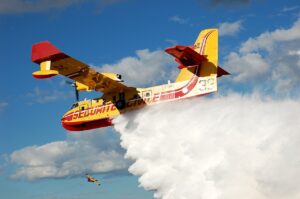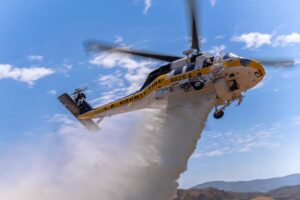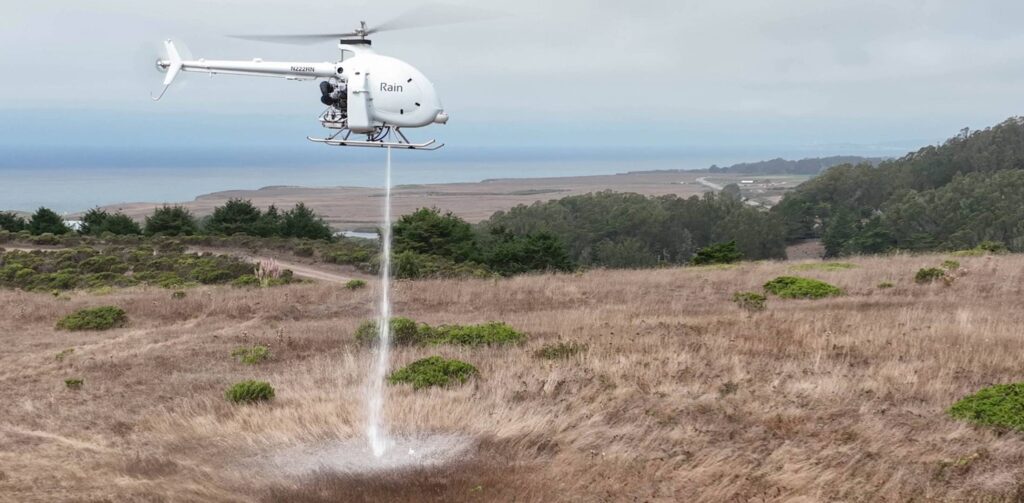
by Mark Huber
Rain Industries recently demonstrated the ability to remotely command a Sikorsky UH-60 Black Hawk via satellite link from its California command center to the aircraft, located in Tennessee. With safety pilots aboard, the Black Hawk self-dispatched and flew to a hypothetical destination as part of a fire-response demonstration.
“This is a critical first proof-of-concept to illustrate how our software will allow uncrewed aircraft to support firefighting missions,” said Ephraim Nowak, Rain’s chief engineer. The demonstration flight that occured in April is one of several projects with customer fire agencies scheduled in 2023, Rain said.
The Black Hawk flight comes six months after Rain unveiled its remotely-piloted, unmanned MK2 firefighting rotorcraft, based on the ultralight Mosquito kit aircraft. Designed for rapid wildfire response, the MK2 can carry up to 30 gallons of retardant, stay airborne for one hour, and has a 23-mile radius. The MK2 can deliver compressed foam for indirect suppression to draw a containment line ahead of an advancing fire front, and Rain envisions situations where several could be pre-positioned in high-risk areas and respond to threats in small groups.
Remotely piloted and ultimately autonomous aircraft provide the best solution to jumping on wildfires during their nascent and most manageable stages, contends Rain co-founder and CEO Max Brodie, who noted that wildfires produce 18 percent of the total world CO2 emissions and are only going to get worse. “Catastrophic wildfire has emitted eight billion tons of CO2 on average globally per year. If we look at just the 2020 wildfire season in the state of California, it undid all greenhouse gas emissions progress in California over the past 20 years,” Brodie said. “Fire agencies at all levels are witnessing fire behavior that they have never seen before. This is not business as usual. There are not the same boundaries we’re used to, and we need to do something different. Wildfires grow exponentially. There is a huge difference between getting to a fire in eight minutes versus 20 minutes. A rapid initial attack has been a concept in the fire community for a long time, but getting to ignitions before they reach the inflection point makes all the difference.”
A UN study recently predicted that extreme wildfires will increase by 50 percent by the end of the century. Fires already are perennial issues in the Western U.S., northern Siberia, central India, and eastern Australia. California, often hit hard by massive and fast-moving wildfires, has deployed a network of 1,000 fire watch cameras that continuously monitor 90 percent of the state’s high-threat fire areas. Rain’s system integrates these camera feeds with early detection sensors with the goal of dispatching nearby autonomous firefighting helicopters within seconds to contain fires in minutes, before they spread and grow exponentially.
“There’s a ton of companies working in this space to use cameras to do wide-area early detection, including lightning detection systems, and there’s a fantastic amount of work being done in early satellite detection,” Brodie said. “It’s not quite there yet for early incipient small fires, but it’s coming and so we are very happy to partner and work with all of these early detection data sources in order to bring that into [our] network control software.”
At a recent Helicopter Association International webinar, Brodie explained he got the idea for Rain after living through one of the worst wildfires in Canada’s history in 2003 when a bolt of lightening hit a tree in Okanagan Mountain Park, B.C. and ultimately consumed 64,000 acres. Brodie recalls the fire “ended up taking out a third of my hometown and caused the largest mass evacuation in Canada since the Second World War. I remember nailing a soaker hose to our roof with my dad as chunks of ash rained down and police stood at the bottom of our driveway ordering us to leave. It’s just not one of those things you forget.”
Rain was founded in 2019 and today is based at the repurposed Alameda Naval Air Station outside of San Francisco. The company is dedicated to leveraging automated fire detection technology and fire prediction and behavior analytics, already in use in parts of California, with autonomous quick-response aircraft. “This is where we step into this picture. The technology that we bring to the table is really the convergence of distinct technologies in sensing and AI [artificial intelligence], robotics and drones, looking at fire-growth models and designing the technology in order to reliably get to ignitions before they go out of control.”

Brodie does not see Rain’s technology as a replacement for manned firefighting aircraft, but rather an important augmentation that not only enables quicker response, but that takes pilots out of aircraft during high-risk situations such as night operations and has the potential to reduce the cost of operations in the long-run.
Aerial firefighting currently “is not a safe job,” Brodie said, noting industry crashes including that of a Coulson 737 tanker that hit a ridgeline during a retardant drop in Australia earlier this year. “When we look at the history of robotics and where robots are typically applied, we send robots to the bottom of the ocean, to outer space, to the places where it’s really dangerous for humans.” Brodie said applying Rain’s technology will “support and make the world safer for pilots in the near term.”
It also should bring down the cost of air operations, Brodie said, inasmuch as rapid response will limit the size of fires and the number of flight hours required to suppress them. “The early stages are going to look very familiar and rely on existing infrastructure and personnel at helitack bases at airports, with personnel on the ground required to support a small platform versus a large platform like Black Hawk. But we think more about what the impact on maintenance will be from not flying a lot of flight hours because small fires don’t require a lot of flight hours. And flight hours are a key driver of maintenance,” he said.
However, Brodie stressed that autonomy is the key to maximizing the value of unmanned aircraft in an aerial firefighting environment. “The trajectory of the spectrum begins with automation and moves towards autonomy,” Brodie said, using a football analogy. “In a football game if the coach were to go around and telling every single player, okay, turn left, turn right block, tackle, throw the ball—there’s just way too many commands that the coach would have to give. Autonomy is more like the football coach that says okay, we’re going run, play 47 B and then everyone just knows what to do.”
While “building full autonomy is not required to help bring this technology into the world and for it to start being useful and deployed,” Brodie said, “To truly write down regional wildfire risk and to respond with enough suppressant, quick enough with enough aircraft, that is going to require more of that autonomous capability.” But it doesn’t come cheap.
“We need to hear from decision makers within the fire agencies and government that this technology is something that folks are willing to pay for and wanting to integrate. As we all know, this stuff is expensive,” Brodie said.
SOURCE: https://www.ainonline.com/aviation-news/business-aviation/2023-06-17/autonomy-key-fast-aerial-firefighting-response
